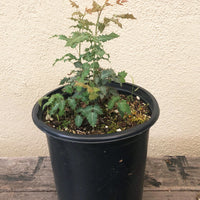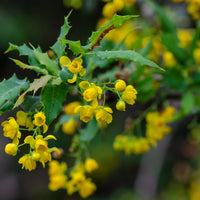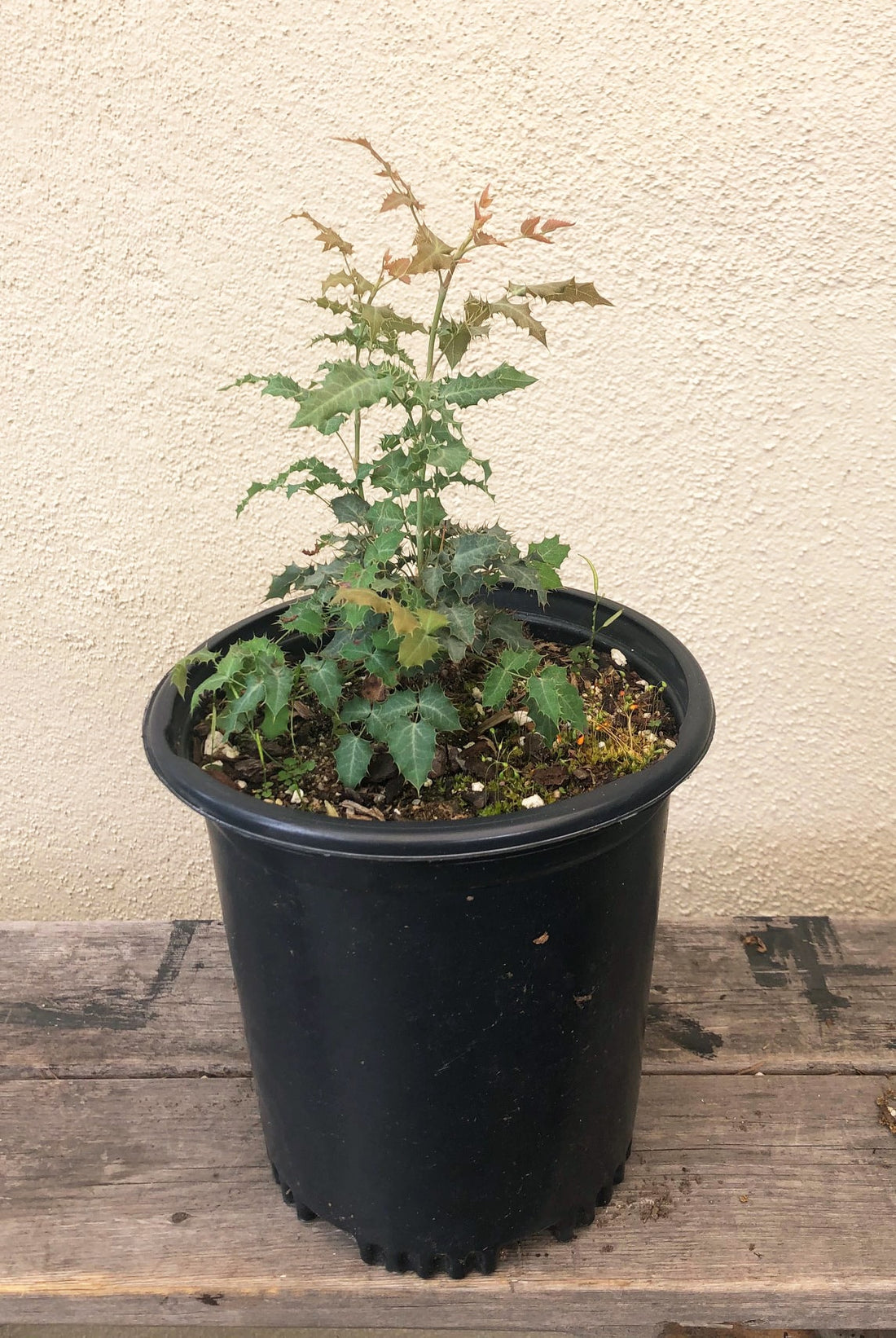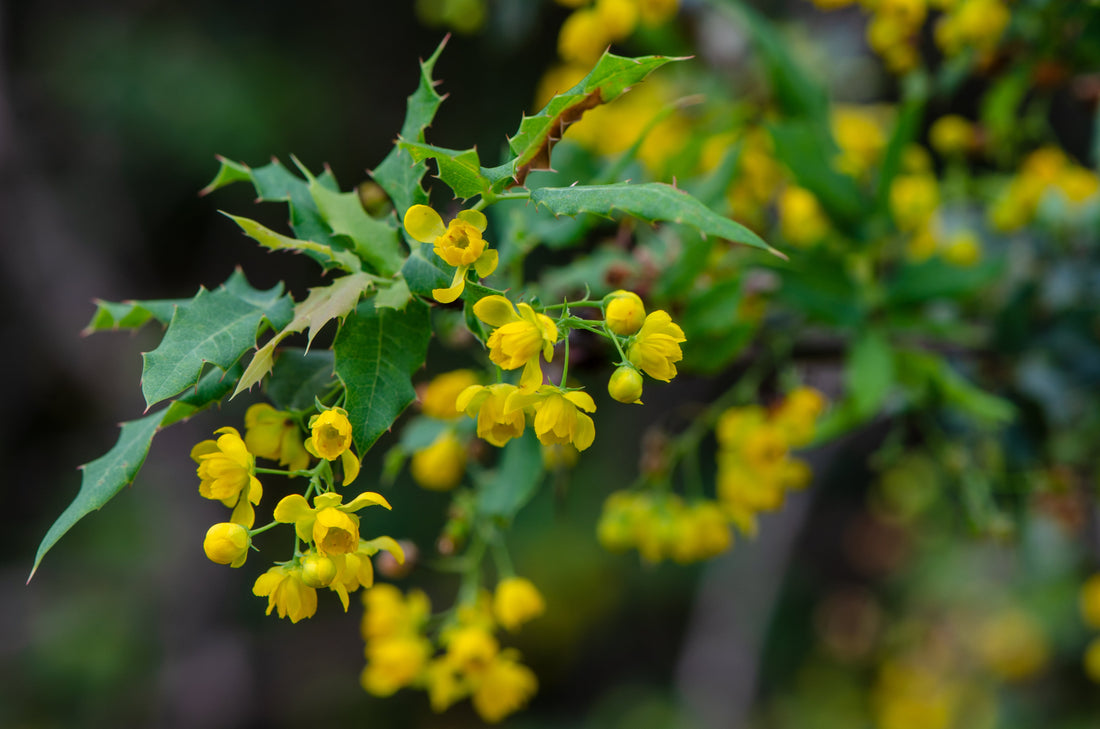

Berberis (Mahonia) nevinii
Nevin's Barberry
A California Native that is federally listed as an endangered species. An evergreen shrub that grows slowly to about six feet tall and wide. In March and April fragrant yellow flower spikes that are two inches long bloom. The foliage is blue fray with red spiky stems. The flowers are followed by black edible berries, food for the birds! It is best to prune in the spring after the plant has flowered. It is not recommended to cut back high up on a stem-if the stem is too tall cut it back to at least a foot off the ground. If the older stems loose their leaves you should cut it back to at least a foot off the ground. Do it pinch plants after they have grown a foot tall.
Plant with: Chamise (Adenostema fasciculatum), Manzanita (Arctostaphylos species), Ceanothus species, Bush Poppy (Dendromecon rigida), Bladderpod (Peritoma arborea), Mountain Mahogany (Cercocarpus species), Sages (Salvia species)
- Plant in full sun to light shade
- Best in well-drained clay soil
- Water twice a month once established
- Great companion plant under evergreen oaks
- Deer resistant
- Attracts birds, bees, and butterflies
- Hardy up to 15 degrees
-Native to California
This content type will accept rich text to help with adding styles and links to additional pages or content. Use this to add supplementary information to help your buyers.
You can use product metafields to assign content to this tab that is unique to an individual product. Use tabs to highlight unique features, sizing information, or other sales information.
Nevin's Barberry
A California Native that is federally listed as an endangered species. An evergreen shrub that grows slowly to about six feet tall and wide. In March and April fragrant yellow flower spikes that are two inches long bloom. The foliage is blue fray with red spiky stems. The flowers are followed by black edible berries, food for the birds! It is best to prune in the spring after the plant has flowered. It is not recommended to cut back high up on a stem-if the stem is too tall cut it back to at least a foot off the ground. If the older stems loose their leaves you should cut it back to at least a foot off the ground. Do it pinch plants after they have grown a foot tall.
Plant with: Chamise (Adenostema fasciculatum), Manzanita (Arctostaphylos species), Ceanothus species, Bush Poppy (Dendromecon rigida), Bladderpod (Peritoma arborea), Mountain Mahogany (Cercocarpus species), Sages (Salvia species)
- Plant in full sun to light shade
- Best in well-drained clay soil
- Water twice a month once established
- Great companion plant under evergreen oaks
- Deer resistant
- Attracts birds, bees, and butterflies
- Hardy up to 15 degrees
-Native to California


